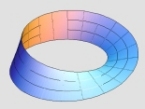Ratzki
Posts: 581
Joined: 8/18/2008
From: Chilliwack, British Columbia
Status: offline

|
quote:
ORIGINAL: Yoozername
quote:
ORIGINAL: Misty
I have read the book "Sturmgeschütze-Panzer der Infantrie" 2 or 3 years ago. There was a report from StuG commander (late 1943). He said, that the StuG crews used barbed wire with concrete to reinforce the front side of their Stug´s. So a lot of the crews survived.
http://www.die-sturmartillerie.com/seite1.htm
I have seen that website. If you look through all the photos, there is not one concreted StuG.
Did the StuG commander say exactly why he put concrete and barbed wire (I assume as some primitive 'rebar') on the StuG?
This is what was aid way back on page one of the discussion, and I think that this was the original point of the thread, to show the superiority of the StuG's sloped front armor.
Yoozername, you said this:
"Its my contention that this area, the frontal sponson sloped armor, is backed up by the superstructure armor. Its also my contention that at least some photographic evidence shows the superstructure armor to be greater than 50mm. In any case, this area represents spaced armor. To be succinct, its sloped face hardened armor that is backed up by vertical 50mm or possibly 80mm armor.
In either case, it would represent some of the best protection against soviet 76mm ammunition in 1943 and possibly 1944."
Now Mobius said that the armor would be viewed as 50+30mm and treated different then a straight 80mm plate. I think that we are all good with this as two plates are less effective then one plate of the same thickness. So the thread moves on to a rather entertaining chat of why concrete was added, which might not have went the way that Prince thought it might, but you far from proved that the application was worthless. So I do a little digging one night and come up with the following, which you chose to ignore completely:
"Talking about face hardened armor
"... Use of this kind of armor must be restricted to cases where the damage to the enemy weapon caused by the armor reduces its penetration, which is not the case at high obliquity, where a weapon that stays in one piece is more likely to ricochet completely away with minimal target damage than one whose nose is broken off and thus whose middle body and base can continue to punch through the plate even after the nose has ricochetted off. Also, face-hardened armor fails by having the armor in the projectile's path punch through the plate back where it acts as a second solid-shot-type projectile, increasing target damage; this is made worse by the fact that such a "plug" of armor can be ejected from a brittle face-hardened plate at striking velocities well below those where the projectile itself can penetrate the plate, which severely compromises the protection afforded by the plate."
From "TABLE OF METALLURGICAL PROPERTIES OF NAVAL ARMOR AND CONSTRUCTION MATERIALS"
by NATHAN OKUN (Revised 5/3/98) "
Now we have Misty here saying he read a book that he proves exists by a link. I think that the use of concrete as often as it seems to come up would state that this is not a rare event. You have sang the song of face hardened sloped armor on the StuG being enough to stop any Russian gun firing 76mm shells contrary to the pictures of concreted StuGs that may state otherwise and contrary to what Mobius said about a spalling armor and what I found says the same, that sloped, face hardened armor would allow a shot to eject this "plug" at velocities well below those that would penetrate the armor. This "plug" would then only have to penetrate 50mm of plate or cause another spalling to take place and we have a problem. I think that other then your point that 76mm shells would not penetrate the StuG's front armor, there is still a very good indication that a problem with the StuG's armor existed, and being that the Russians were mostly shooting 76mm shells at it, I think that there is enough evidence that there might be more to this 76mm discussion then a couple of penetration tables and test firings. If I was to make a statement about the StuG's armor vs Russian 76mm guns after looking at the evidnce, it would be this: 50mm is not enough so they designed another 30mm to be added. This improved things but the guys out there were not satified with the performance of 50+30mm and went with a field fix(concrete) that might not have totally fixed the issue with the armor, but did improve the survival frequency of the StuG's crew.
|
 Printable Version
Printable Version





















 New Messages
New Messages No New Messages
No New Messages Hot Topic w/ New Messages
Hot Topic w/ New Messages Hot Topic w/o New Messages
Hot Topic w/o New Messages Locked w/ New Messages
Locked w/ New Messages Locked w/o New Messages
Locked w/o New Messages Post New Thread
Post New Thread